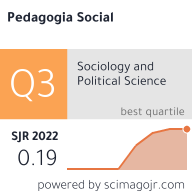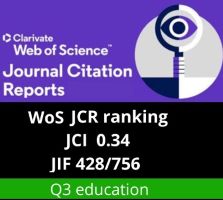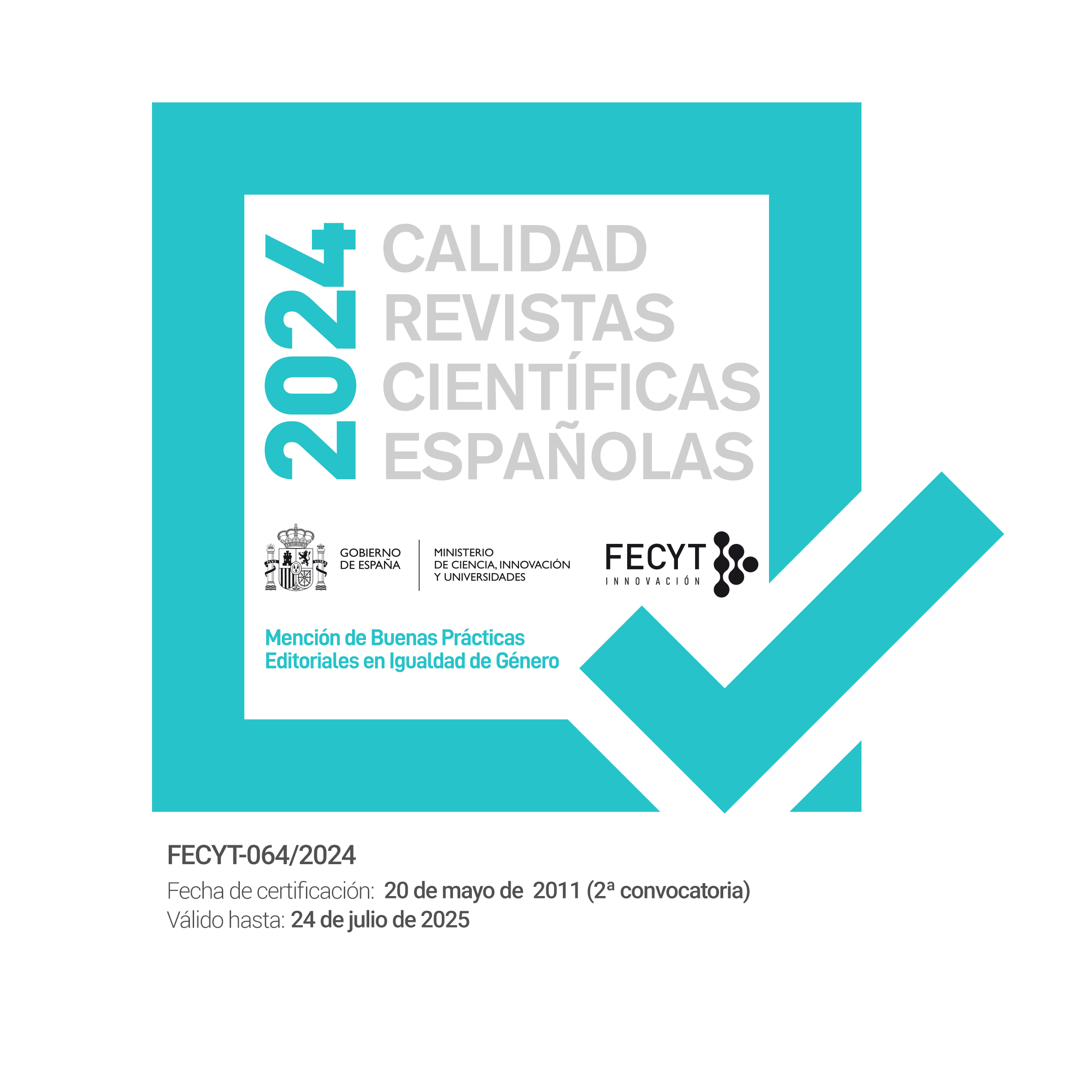Analysis of psychological well-being, perceived health status and quality of life in older adults
DOI:
https://doi.org/10.7179/PSRI_2013.22.11Keywords:
adult education, ageing, psychological welfare, health, interpersonal relations.Abstract
As part of the educational intervention in social contexts to improve the quality of life of elderly people, to describe the state of this kind of people should be a priority to promote proper active and healthy aging. Therefore, the aim of this study was to analyze, in a sample of 328 participants of Madrid region, the association between psychological welfare, health status perceived and health habits that are directly related to the quality in this part of the life. For this purpose, an ad hoc survey was applied together with the Psychological Well-being Scale by Carol Ryff which sets a model with six dimensions: Self-acceptance, Positive relations with others, Autonomy, Environmental mastery, Purpose in life and Personal growth. The results show a tendency for people who say that their health is very poor; they tend to score higher on Self-acceptance and Purpose of life than those who consider their health as good or very good. Also those who do exercise during their free time get high scores on the scale of Self acceptance. In this sense, those who do exercise regularly score higher on Self-acceptance and Environmental mastery. Finally, elderly people who do not go with other people are less likely to talk to other people about their problems and receive less praise. They get lower scores for almost all of the dimensions of psychological welfare.
Downloads
References
Gracia, M. y Marco, M. (2000).Efectos psicológicos de la actividad física en personas mayores.Psicothema, 12(2), 285-292.
Cortina, J. M. (1993). What is coefficient alpha? An examination of theory and aplications. Journal of Educational Psychology, 78(1), 98-104.
Kelloway, E. K., Catano, U. M. y Soutwell, R. R. (1992). The construct validity of union commitment: Development and dimensionality of a shorter scale. Journal of Occupational of Organizational Psychology, 65, 197-211.
http://dx.doi.org/10.1111/j.2044-8325.1992.tb00498.x
Díaz, D., Rodríguez-Carvajal, R., Blanco, A., Moreno-Jiménez, B., Gallardo, I., Valle,C. y Van Dierendonck, D. (2006). Adaptación Espa-ola de las escalas de Bienestar Psicológico. Psicothema,18 (3), 572-577.
PMid:17296089
Ferguson, S. y Googwin, A. (2010). Optimism and Well-Being in Older Adults: The Mediating Role of Social Support and Perceived Control. The International Journal of Aging and Human Development, 71, 43-68.
http://dx.doi.org/10.2190/AG.71.1.c
Fernández Ballesteros, R. (1992). Dimensiones de la evolución de la calidad de vida. Madrid: Universidad Autónoma.
Fernández, J. D. y Limón, Mª. R. (2012). El arte de envejecer con humor. Málaga: Aljibe.
George, L. K. (2006). Perceived quality of life. In R.H. Binstock, L. K. George (editors), Handbook of aging and the social sciences, sixth edition, (pp. 320-336) San Diego, CA: Academic Press.
http://dx.doi.org/10.1016/B978-012088388-2/50021-3
PMid:16923476
George, L. K. (2010). Still Happy After All These Years: Research Frontiers on Subjective Well-being in Later Life. The Journals of Gerontology: Series B, 65B(3), 331-339.
http://dx.doi.org/10.1093/geronb/gbq006
PMid:20233742
Gonçalves Marques, E. M. (2012). Envelhecimento no Concelho da Guarda. Un estudo sobre qualidade de vida. Tesis Doctoral. Universidad Pontificia de Salamanca.
IMSERSO (2010). Informe Anual 2010. Madrid: IMSERSO.
Instituto Nacional de Estadística. Encuesta Nacional de Salud, Cuestionario de adultos, 2006. Madrid: Ministerio de Sanidad, Servicios Sociales e Igualdad. Recuperado de http://www.msps.es/estadEstudios/estadisticas/encuestaNacional/encuestaNac2006/ENS_06_Adultos_definitivo.pdf
Instituto Nacional de Estadística (2009). Encuesta Europea de Salud, 2009. Madrid: Ministerio de Sanidad, Servicios Sociales e Igualdad. Recuperado de http://www.ine.es/metodologia/t15/t153042009cues.pdf
Jiménez, M., Martínez, P., Miró E. y Sánchez, A. (2006). Bienestar psicológico y hábitos saludables: ¿están asociados a la práctica de ejercicio físico? International Journal of Clinical and Health Psycholgy, 8(1), 185-202.
Keyes, C., Ryff, C. y Shmotkin, D. (2002). Optimizing well-being: theempirical encounter of two traditions. Journal of Personality and Social Psychology, 82, 1007-1022.
http://dx.doi.org/10.1037/0022-3514.82.6.1007
PMid:12051575
Kirby, S.E., Coleman, P. G. y Daley, D. (2004). Spirituality and well-being in frail and non-frail older adults. Journal of Gerontology: Psychological Sciences, 59(3), 123-129.
http://dx.doi.org/10.1093/geronb/59.3.P123
Lehr, Ú. (2008). La longevidad, un reto para el individuo y la sociedad. En Foro de la Sociedad Civil sobre Envejecimiento, celebrado en León, noviembre 2007. Madrid: IMSERSO.
Lirio, J., Alonso, D. y Herránz, I. (2009). Envejecer participando. El proyecto "Entre mayors". Una experiencia de investigación acción. Castilla-La Mancha: Mi-o y Dávila.
Limón Mendizábal, Mª. R. (2011). Nuevos retos de la educación para la salud en las personas mayores. En R. Perea Quesada, Educación para la salud y calidad de vida, pp. 149-177. Madrid: Díaz de Santos.
Montiel, P. y Merino, A. (2011). Beneficios psico-sociales de la actividad física. Jornada celebrada en el IMSERSO el día24 de febrero. Madrid: Ministerio de Sanidad y Política Social.
Mora, F. (2009). Claves para envejecer con éxito. Revista 60 y Más, 285, 14-17. Madrid: IMSERSO.
Naciones Unidas (2002). Informe de la Segunda Asamblea Mundial sobre el Envejecimiento. Nueva York: Naciones Unidas.
Organización Mundial de la Salud (2001). Ageing and Health. Acheiving health across the spam. Geneve: OMS.
Pérez de Guzmán Puya, M. V. (Coord.) (2005). Organización y gestión. Agentes al servicio de los mayores. Madrid: Universitas.
Pérez Serrano, G. (Coord.) (2005). Intervención y desarrollo integral en personas mayores. Madrid: Universitas.
Plagnol, A. C. y Easterlin, R. A. (2008). Aspirations, attainments, and satisfaction: Life cycle differences between American women and men. Journal of Happiness Studies, 9, 601-619.
http://dx.doi.org/10.1007/s10902-008-9106-5
Rodríguez-Artalejo, F. (2011). Envejecer satisfactoriamente. Revista Espa-ola de Geriatría y Gerontología, 46(1), 1-5.
http://dx.doi.org/10.1016/j.regg.2010.09.003
PMid:21306799
Rubio Florido, I. (2012). El tiempo de ocio de los cuidadores familiares: Su relación con la salud y la percepción de carga. Tesis doctoral. Bilbao: Universidad de Deusto.
Ryan, R. M. y Deci, E. L. (2001). To be happy or to be self-fulfilled: A review of Research on hedonic and eudaemonic well-being. In S. Fiske (Ed.), Annual Review of Psychology (pp. 141-166). Palo Alto, CA: Annual Reviews, Inc.
PMid:11148302
Ryff, C. D. (1989a). In the eye of the beholder: views of psychological well-being among middle-aged and older adults. Psychol Aging, 4, 195-210.
http://dx.doi.org/10.1037/0882-7974.4.2.195
PMid:2789747
Ryff, C. D. (1989b). Happiness is Everything, or Is It? Explorations on the Meaning of Psychological Well-Being.Journal of Personality and Social Psychology, 57(6), 1069-1081.
http://dx.doi.org/10.1037/0022-3514.57.6.1069
Ryff, C.D. y Keyes, C. L. (1995). The structure of Psychological Well-Being Revisited.Journal of Personality and Social Psychology, 69 (4), 719-727.
http://dx.doi.org/10.1037/0022-3514.69.4.719
Schalock, R. L. y Verdugo, M. A. (2003).Calidad de vida – Manual para profesionales de la educación, salud y servicios sociales. Madrid: Alianza Editorial.
Stone, A., Schwartz, J. E., Broderick, J. E. y Deaton, A. (2010).A snapshot of the age distribution of psychological well-being in the United States. PNAS, 107(22), 1-6.
http://dx.doi.org/10.1073/pnas.1003744107
PMid:20479218 PMCid:2890490
UNFPA (2011). Estado de la población mundial 2011. Nueva York: UNFPA.
Yang, Y. (2008). Social inequalities in happiness in the United States, 1972 to 2004: An age-period-cohort analysis. American Sociological Review, 73, 204-236.
Downloads
Published
How to Cite
Issue
Section
License
Copyright (c) 2014 Pedagogia Social. Revista Interuniversitaria

This work is licensed under a Creative Commons Attribution-NonCommercial 3.0 Unported License.
Copyright and right to archive
The published version of the articles can be self-archived by their authors in open access institutional and thematic repositories. However, Pedagogía Social. Revista Interuniversitaria must authorize partial or global reutilisation on new papers or publications.
Published papers must be cited including the title of the journal Pedagogía Social. Revista Interuniversitaria, issue, pages and year of publication
Ethical responsibilities
Pedagogía Social. Revista Interuniversitaria does not accept any material that has been previously published in other documents or publications. Authors are responsible for obtaining the required permissions for partial or global reproduction any material from other publications, and to correctly quote its origin.
Pedagogía Social. Revista Interuniversitaria is obliged to detect and report fraudulent practices.
Only those who have intellectually contribute to the development of the paper must appear as authors.
The journal expects authors to declare any commercial partnership that might entail a conflict of interest with respect to the submitted article.
Authors must mention in the article, preferably in the “methodology” section, that the procedures used during the samplings and controls have been made after getting informed consent.
The journal will not use any received contribution in a way other than the goals described in these guidelines.
Copyright Notice
© Pedagogía Social. Revista Interuniversitaria. Papers published in both the printed and online versions of this Journal are property of Pedagogia Social. Revista Interuniversitaria, being required to cite the source in any partial or total reproduction.
Unless otherwise stated, all content of this electronic journal is distributed under "Creative Commons Attribution-Non commercial 3.0 Spain" (CC-by-nc) license for use and distribution. The informative version and the legal text of this license is available here. This has to be expressly stated in this way when necessary.





